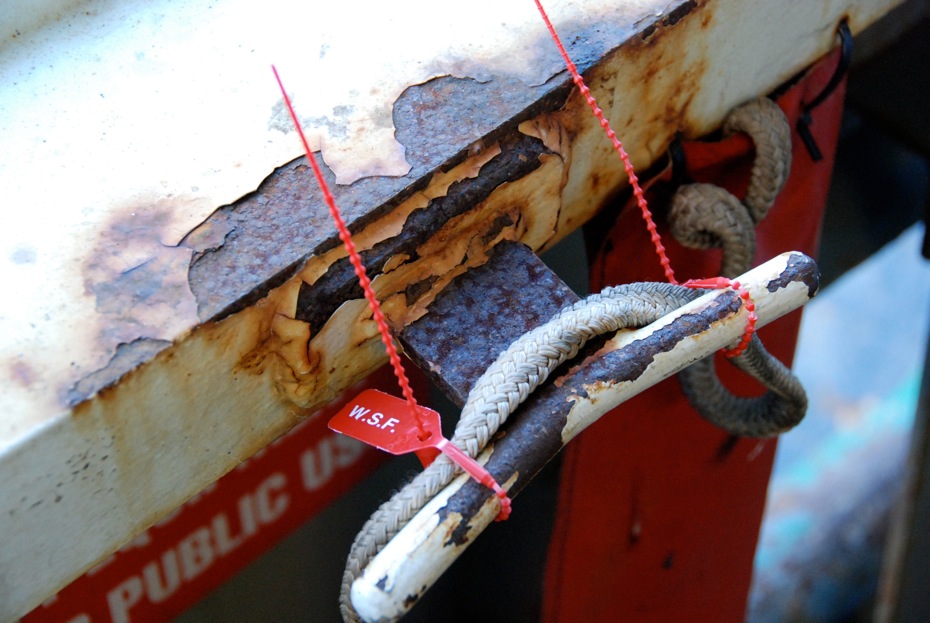About a month ago, just after Mother’s Day, a Seattle newspaper columnist, Knute Berger, aka Mossback, wrote a piece deploring visible rust on our local ferries. “Welcome to Seattle,” he wrote in Crosscut, a daily online publication, “home of the rust-bucket.”
“Our fleet increasingly seems to resemble something put afloat by what, the Albanian navy?”
He’s right about the rust, but he’s wrong about the solution, which to him is as simple as a bucket of paint and a paintbrush.
I, too, find the highly visible rust on Washington State Ferries embarrassing. A few years ago, I drove north to British Columbia to do a story about BC Ferries’ newest boats, which had just been built in Germany. On the way home from Vancouver Island, I rode between Sidney, British Columbia, and Anacortes, Wash., on the Chelan, an IMO-certified ferry. It looked terrible. (See photo at left). Given my ride to the island on the gleamingly new BC boat, the shabby appearance was especially stark.
But the solution isn’t as simple as handing a deckhand a paint brush and a bucket of paint. Or hiring street people to do the work, as one commenter suggested.
The solution is money. Putting a 460' vessel in drydock so the old paint and rust can be safely blasted off and recovered, properly primed and painted is extremely expensive, as Washington Secretary of Transportation Lynn Peterson pointed out in her reply to Berger’s article: “For a Jumbo Mark II ferry like the 202-car Tacoma that Mossback rode, a paint job costs more than $7 million dollars and takes up to four months during which the vessel is out of service.”
Berger also characterized the rust as “Eyman’s eczema,” which is a clever play on words that is also reasonably accurate. Tim Eyman is a local conservative political activist known for his anti-tax initiatives. One such initiative eliminated the state’s vehicle excise tax, which had provided steady funding for ferries and other public transportation projects.
As a frequent ferry rider myself, I’m not always happy with the condition of the boats and the helpfulness of the crews, but the dependability is good and the safety is excellent.
At the same time, I am very happy that WSF’s newest ferry, the just-built (and freshly painted) Tokitae will soon go into service on my run between Clinton and Mukilteo. With space for 144 vehicles, the big Toke will help reduce loading area congestion and present a much more appealing face to the public.



.JPG.small.400x400.jpg)

